Facial Feminization Surgery (FFS) in Hong Kong
Search and Compare the Best Clinics and Doctors at the Lowest Prices for Facial Feminization Surgery (FFS) in Hong Kong

Find the best clinics for Facial Feminization Surgery (FFS) in Hong Kong
No clinics available
Thailand offers the best prices Worldwide
Price: $ 1,945

- Home
- Hong Kong
Compare Before & After Photos of _procedure_photos.phpFacial Feminization Surgery (FFS)
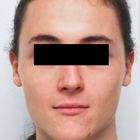
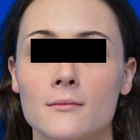
Front view
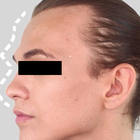

Half-side view
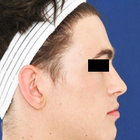
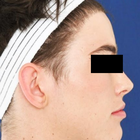
Full-side view
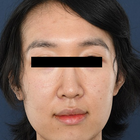

Front view
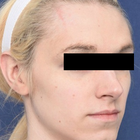

Half-side view
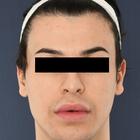
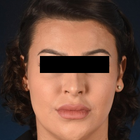
Front view
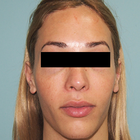

Front view
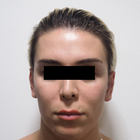

Front view
WHY US?
At Medijump, we're making medical easy. You can search, compare, discuss, and book your medical all in one place. We open the door to the best medical providers worldwide, saving you time and energy along the way, and it's all for FREE, no hidden fees, and no price markups guaranteed. So what are you waiting for?

Free

Best Price

Widest Selection

Risk-Free
What you need to know about Facial Feminization Surgery (FFS) in Hong Kong
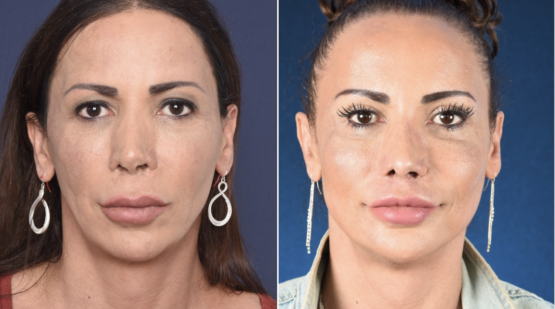
Facial Feminization Surgery, often abbreviated as FFS, is an extensive surgical process designed to modify masculine facial characteristics into a more feminine appearance. The procedure comprises several surgeries including rhinoplasty, forehead recontouring, and jaw and chin modifications. FFS is frequently sought after by transgender women desiring to more authentically express their gender identity. Any potential patient is advised to consult with a licensed surgeon to personalize the surgical plan according to their specific needs and aspirations.
Facial Feminization Surgery (FFS) usually necessitates an exhaustive pre-procedure assessment. This involves a thorough review of the patient's medical history, a complete physical examination, a psychological evaluation, and possibly facial x-rays. The surgeon will also discuss the aesthetic objectives, benefits, risks, and potential complications of the surgery with the patient. A collaborative decision-making approach is used to ensure patient safety and contentment following the procedure.
In this before and after example, the patient underwent Rhinoplasty, Chin recontouring, Jaw reduction, Lip lift, and eyelid surgery (blepharoplasty). The photo is taken 4 months post-op.
What is the cost of Facial Feminization Surgery (FFS) in Hong Kong?
Various elements such as the surgical complexity, hospital stays, anesthesiologist costs, and surgeon's fees influence Facial Feminization Surgery (FFS) pricing in Hong Kong. On average, possible charges vary from $20,000 up to $50,000. A detailed price breakdown from your healthcare provider will provide an exact view of the cost details.
The value of the procedure does not necessarily need to compromise the quality and standards of the surgery. Gain clarity about what components are inclusive and exclusive in the overall cost to understand thoroughly what your payment encompasses. Insurance firms usually do not cover aesthetic procedures, hence comprehensive knowledge and prudent financial preparation will streamline the procedure and make the Facial Feminization Surgery (FFS) a valid investment in enhancing your self-perception and assurance.
What does a Facial Feminization Surgery (FFS) Procedure Involve?
Facial Feminization Surgery (FFS) entails a range of tailored techniques aimed at personal needs with a focus on feminizing and gently modifying the facial structure. These techniques may encompass forehead reshaping, adjustments to the jaw and chin, rhinoplasty, facelifts, and other unique enhancements. The rising trend in health and well-being-oriented medical research is mirrored in personalized surgery schemes, ensuring the outcomes are attuned to individuals.
Normally, a care center will execute an in-depth consultation process to comprehend your aesthetic aspirations and draft a surgical blueprint. This evaluation is essential in harnessing the maximum advantages from the Facial Feminization Surgery (FFS). Ensuring the health and safety of the patient, a pre-operative assessment, encompassing a review of physical health and mental well-being, is a crucial measure.
How Long Should I Stay in Hong Kong for a Facial Feminization Surgery (FFS) Procedure?
During the planning phase for Facial Feminization Surgery (FFS), considering the necessary time for the operation and subsequent recovery is vital, in order to ensure a seamless return to standard duties. The length of your Hong Kong visit is heavily influenced by the surgery’s intricacy, your personal health condition, and your recovery speed. Generally, a timeframe of one to two weeks is advised before getting back to everyday activities.
However, the precise timeline can differ considerably, with follow-up meetings commonly arranged during your stay. These are paramount for evaluating your progress and identifying any possible surgical complications. This window also presents a chance for practising respiratory exercises and other preventive health methods to expedite a seamless recovery. Adherence to all the instructions given by your surgeon during this term is critical, as this significantly influences the success rate of the Facial Feminization Surgery (FFS).
What's the Recovery Time for Facial Feminization Surgery (FFS) Procedures in Hong Kong?
Recovery from Facial Feminization Surgery (FFS) can differ among individuals, largely depending on the procedure's scope and the patient's overall health. Usually, patients require approximately six weeks of recuperation before they can engage in strenuous activities. During this time, individuals may experience swelling, bruising, and discomfort related to the surgery, but these symptoms typically diminish over time.
Getting plenty of rest, maintaining adequate hydration, and consuming a balanced diet can aid in accelerating recovery. It's vital to strictly follow the healthcare provider's advice regarding prescribed medicines, care of surgical wounds, and limitations on activities to prevent complications and promote healing. Keep in mind that health and well-being extend beyond the surgical procedure itself, so comprehensive aftercare is essential for successful outcomes.
What sort of Aftercare is Required for Facial Feminization Surgery (FFS) Procedures in Hong Kong?
Appropriate aftercare is a vital component of successful Facial Feminization Surgery (FFS) and significantly influences the recovery process. It may include prescribed medications, regular medical check-ups, custom-made nutrition plans, and effective weight management. The recovery phase could span several weeks, during which adequate rest is paramount for a seamless recuperation.
Patients are often advised by their surgeons to temporarily abstain from rigorous physical activities and to maintain a healthy lifestyle. The latter should incorporate balanced nutrition, staying hydrated, taking supplements, and ensuring proper sleep and mental health management. It's important to note that adherence to the prescribed aftercare plan and attendance at follow-up visits are key to tracking improvements and promptly addressing any potential complications.
What's the Success Rate of Facial Feminization Surgery (FFS) Procedures in Hong Kong?
Facial Feminization Surgery (FFS) is recognized as an extremely successful surgery that produces transformative and enduring outcomes. The success rate fluctuates depending on various factors, including the proficiency of the surgeon, the overall health of the patient, and the quality of care after the surgery. A majority of patients report high levels of satisfaction, citing increased self-confidence and an enhanced quality of life.
It's important to understand, however, that despite its high success rate, the procedure isn't without potential risks and complications. Complications like infections, scarring, and dissatisfaction with the aesthetic outcome are potential, though they are rare occurrences. Thorough pre-operative evaluations, skilled surgical hands, and comprehensive post-operative care significantly lessen these risks. Consequently, when selecting the most suitable protocol for your Facial Feminization Surgery (FFS), the guiding factors should be patient safety and satisfaction.
Check out this video for before and after images of FFS patients, you'll be amazed by some of the results made possible by this surgical procedure.
Are there Alternatives to Facial Feminization Surgery (FFS) Procedures in Hong Kong?
Bear in mind that each person's needs and preferences are distinct, and surgical interventions might not be the most suitable route for everyone. There are other alternatives available for those who might be more inclined towards non-surgical solutions. Aesthetic treatments like injectable fillers, Botox, and others can simulate some effects of the Facial Feminization Surgery (FFS) on a temporary basis. However, cosmetic treatments of this kind typically necessitate ongoing sessions to preserve the sought after result.
Furthermore, some individuals might prefer to engage in psychological or behavioral therapies that encourage self-acceptance and a positive body image. Such therapies address the mental health components of self-image and gender dysphoria, offering a different perspective to surgery. Having open-ended discussions with healthcare providers to explore all the available options prior to making a decision is strongly advised.
What Should You Expect Before and After the Facial Feminization Surgery (FFS)?
Prior to undertaking Facial Feminization Surgery (FFS), patients participate in an in-depth consultation process. During this stage, surgeons evaluate the individual's health status, expectations, and motivations to design a treatment program that best meets their needs. Various health screenings may be conducted to verify the patient's physical suitability for the operation.
Post-procedure, initial weeks may bring about some degree of discomfort, swelling, and bruising, which will progressively decrease. Adequate post-procedure care can significantly improve recovery and the ultimate outcome of your Facial Feminization Surgery (FFS). It's crucial to maintain regular communication with your surgeon and promptly report any unusual symptoms. The goal is to ensure a successful surgical procedure followed by a rapid and smooth recovery, guiding you towards a more self-assured version of yourself.
What is the Preoperative Preparation for Facial Feminization Surgery (FFS) in Hong Kong?
Preparing for Facial Feminization Surgery (FFS) entails addressing both physical and mental aspects to ensure successful surgery and recuperation. Patients undergo comprehensive evaluations involving various diagnostic tests to determine their overall health and suitability for the surgery. Moreover, patients may need to halt tobacco use, moderate alcohol consumption, and adjust certain medications—especially those affecting blood clotting—as these factors could disrupt both the surgical process and healing.
In addition, therapy sessions may be suggested to assist individuals in managing the psychological implications of such a life-changing procedure. A balanced diet is also pivotal in enhancing the body's healing capacity; adopting a healthy eating regimen, such as the Mediterranean diet, and considering suitable nutritional supplements can optimize preoperative preparation. Emphasizing mental wellbeing is another vital aspect of the journey, and implementing stress management strategies can prove beneficial during this period.
What are the Long-term Implications of Facial Feminization Surgery (FFS) in Hong Kong?
Facial Feminization Surgery (FFS) is often viewed as a long-term commitment that yields lasting and significant transformations. It significantly enhances self-image and self-confidence, leading to a substantial improvement in life quality. Though the changes induced by the surgery are generally unchanging, sustaining a consistent weight and adopting a healthy lifestyle are vital in preserving the results.
It's important to bear in mind that adjusting psychologically is an integral aspect of such a transformative experience. Individual or group therapies can aid in navigating these changes, fostering deep-seated growth and self-understanding following the Facial Feminization Surgery (FFS). Always remember, the success of a procedure goes beyond the physical alteration—it also involves overall wellbeing, health, and a positive life perspective.
Whilst the information presented here has been accurately sourced and verified by a medical professional for its accuracy, it is still advised to consult with your doctor before pursuing a medical treatment at one of the listed medical providers
No Time?
Tell us what you're looking for and we'll reachout to the top clinics all at once
Enquire Now

Popular Procedures in Hong Kong
Prices Start From $96

Prices Start From $111

Prices Start From $70

Prices Start From $16

Prices Start From $220

Prices Start From $28

Prices Start From $672

Prices Start From $275

Prices Start From $101

Prices Start From $556

Prices Start From $4,377

Recommended Medical Centers in Hong Kong for procedures similar to Facial Feminization Surgery (FFS)

- Interpreter services
- Translation service
- Religious facilities
- Medical records transfer
- Medical travel insurance
- Health insurance coordination
- TV in the room
- Safe in the room
- Phone in the room
- Private rooms for patients available

- Interpreter services
- Translation service
- Religious facilities
- Medical records transfer
- Medical travel insurance
- Health insurance coordination
- TV in the room
- Safe in the room
- Phone in the room
- Private rooms for patients available

- Interpreter services
- Translation service
- Religious facilities
- Medical records transfer
- Medical travel insurance
- Health insurance coordination
- TV in the room
- Safe in the room
- Phone in the room
- Private rooms for patients available

- Interpreter services
- Translation service
- Religious facilities
- Medical records transfer
- Medical travel insurance
- Health insurance coordination
- TV in the room
- Safe in the room
- Phone in the room
- Private rooms for patients available
Facial Feminization Surgery (FFS) in and around Hong Kong
About Hong Kong
The former British colony became a special administrative region of China in 1997, when Britain's 99-year lease of the New Territories, north of Hong Kong Island, expired. Hong Kong is governed under the principle of "one country, two systems", under which China has agreed to give the region a high degree of autonomy and to preserve its economic and social systems for 50 years from the date of the handover.
Hong Kong welcomes an ever-increasing number of medical tourists each year, many of which travel for Facial Feminization Surgery (FFS) procedures. Hong Kong is a well-established hub for medical tourism, although it is better known for its quality and cutting-edge procedures than for cost.
Popular Parts of Hong Kong
Hong Kong is a blend of a dynamic cultural landscape with an astonishing skyline, glamorous shopping, as well as one of the world’s top culinary destinations.
- Victoria Peak (The Peak) offers the best view of Hong Kong’s modern skyline. It is the highest point on Hong Kong Island and the most visited spots by tourists. You can ride the tram to the top where you will find the Peak Tower and Peak Galleria. The peak is covered by a large park filled with incredible greenery.
- Big Buddha (Tian Tan Buddha Statue) is located in Lantau Island. It is one of the largest Buddha statues and took 12 years to complete. It is the perfect place for tourists who wish to get away from the hustle and bustle of the city. Surrounded by forest and ocean, the statue gives an incredible view. The best way to reach the Buddha is by riding the Ngong Ping Cable car which will take you on a spectacular ride over the forest.
- Wong Tai Sin Temple is one of the most popular temples in Hong Kong. It was named after the famous monk of yore, Wong Tai Sin. It is said that he has the ability to punish evils, heal the wounded, rescue the dying, and grant whatever is requested. The temple is also known as Sik Sik Yuen and has a traditional Chinese temple style.
- Temple Street Night Market is the best night market for tourists. Starting at 6.00 pm, it is the place to go if you want to taste Hong Kong’s street food. You can also find vendors selling gadgets, trinkets, clothing, household goods, jewelry, and traditional Chinese crafts. The place is brimming with atmosphere and it has served as the backdrop to many movies.
- Hong Kong Disneyland is a wonderful world for any Disney lovers. The park is divided into seven lands: Adventureland, Grizzly Gulch, Main Street, Mystic Point, Fantasy Land, Toy Story Land, and Tomorrowland. Here, you will find various adventures, parades, and musicals. In the evening, you can watch the fireworks over the castle.
- Star Ferry is a beloved icon of the city. It is said that your visit to Hong Kong will never be complete without cruising on the famous ferry. You can see the sparkling landscape of the city while enjoying the refreshing breeze.
Weather and Climate in Hong Kong
Hong Kong’s weather is influenced by the monsoon subtropical climate. The temperature is mostly mild all year round. May to September are the warmest months with an average temperature of 33 °C while mid-December to February are the coldest months with the temperature falling to 10 °C. Spring starts from March and ends in early May and the weather during this season is pleasant with many sunny days, but you can also have foggy, rainy, and stormy days.
The summer in Hong Kong is hot and humid with a perpetual threat of rain showers, thunderstorms, and sometimes even typhoons. Summer lasts for around four months from May to September. With August as the wettest month in the city.
The best time to visit Hong Kong is in the autumn, starting from October to early December when the days are generally sunny and the temperatures range from 22 °C to 28 °C. Winter is the holiday season in the city and the average temperature is around 16 °C to 18 °C but it can drop under 10 °C.
Getting Around in Hong Kong
The main gateway to Hong Kong is the Hong Kong International Airport. The airport is built on reclaimed land on the island of Chek Lap Kok and it serves international destinations to almost every major city in the world, including, Dubai, Amsterdam, Seoul, Canada, Singapore, and Sydney. For affordable travel, budget airlines such as AirAsia, Eastar Jet, and IndiGo are available. There are a wide variety of public transport services to and from the airport. The best options are Airport Express, public buses, and taxis.
To get around Hong Kong, it is best to purchase Tourist Day Tickets which gives you unlimited access to the main MTR and certain Rail lines for HK$65. If you are planning to stay longer in the city, the Octopus Card will be a big help. The card is reusable and can be used for almost every public transportation mode and you can buy the card for HK$150.
One of the fastest and easiest ways to get around the city is by the MTR (Mass Transit Railways) and it is one of the most advanced metro systems on the planet. The MTR operates 11 lines from 06.00 am to 01.00 am. The fare ranges from HK$3.6 to HK$52.6 depending on the distance.
The public bus is a great way to explore Hong Kong, especially the south side of the island and the New Territories. Most buses are double-decker and air-conditioned and it is an affordable way to get around the city and the fares will vary based on the distance traveled. Other public transportation modes such as tram and ferry are also available.
If you need a more flexible way of travel, taxis are easy to find and offer excellent value. There are three types of taxis, the red taxis operate throughout the city except for Lantau Island and the fares start at HK$24. The green taxis only operate in the New Territories and the fares start at HK$20.50. The blue taxis serve Lantau Island and the fares start at HK$19.
Tourist Visas in Hong Kong
Citizens of around 170 countries and territories may visit and stay in Hong Kong without a visa for up to 180 days. Other countries not listed in the visa-free entry such as Albania, Armenia, and Cambodia need to apply and obtain a visa before entering the country. All visitors must have a passport valid for at least one to six months beyond the date of entry to Hong Kong. Visitors can apply for a visa from their nearest Chinese embassy or consulate.
Additional Information
- Local Currency: The official currency is the Hong Kong Dollar. US$1 converts to HK$7.78.
- Money & Payments: Tourists can find ATMs almost everywhere, and most ATMs are linked up to international money systems such as Maestro, Cirrus, and Visa Electron. Credit cards are widely accepted. Tipping is generally not expected and restaurants usually add 10% to 15% service charge to your bill.
- Local Language: Most people in Hong Kong speak Chinese (Cantonese and Mandarin). However, English is also widely spoken since it is one of the government official languages.
- Local Culture and Religion: Many people in Hong Kong either follow Buddhism, Confucianism, or Taoism. Christianity is also one of the major religions in the city. Other religions such as Islam, Sikhism, Hinduism, Judaism, and the Bahá'í Faith are also freely practiced.
- Public Holidays: Hong Kong celebrates major religious holidays such as Lunar New Year, Ching Ming Festival, and Christmas.
Popular Searches
- Plastic Surgery in Thailand
- Dental Implants in Thailand
- Hair Transplant in Thailand
- Breast Augmentation Thailand
- Gastric Sleeve in Thailand
- Gender Reassignment Surgery in Thailand
- Laser Hair Removal in Bangkok
- Botox in Bangkok
- Dermatology in Bangkok
- Breast Augmentation in Bangkok
- Coolsculpting in Bangkok
- Veneers in Turkey
- Hair Transplant in Turkey
- Rhinoplasty in Turkey
- Stem Cell Therapy in Mexico
- Rhinoplasty in Mexico
- Liposuction in Mexico
- Coolsculpting in Tijuana
- Rhinoplasty in Korea
- Scar Removal in Korea
- Gastric Sleeve in Turkey
- Bone Marrow Transplant in India
- Invisalign in Malaysia
- Plastic Surgery in the Dominican Republic
- Tummy Tuck in the Dominican Republic
- Plastic and Cosmetic Surgery in Poland
- Rhinoplasty in Poland
- Hair Implant in Poland
- Dental Implants in Poland
- IVF in Turkey